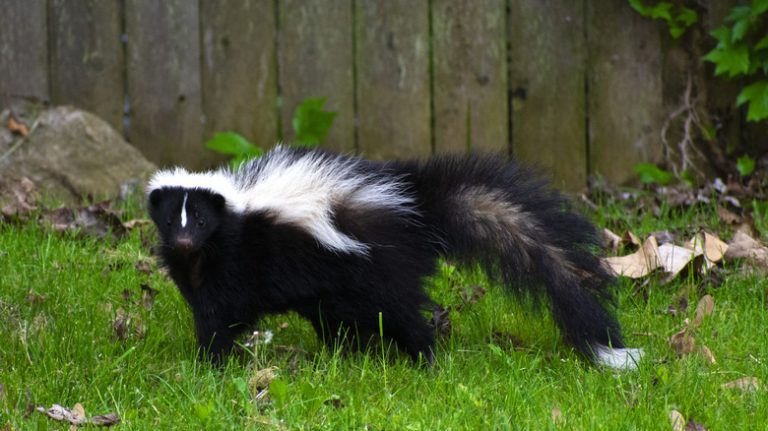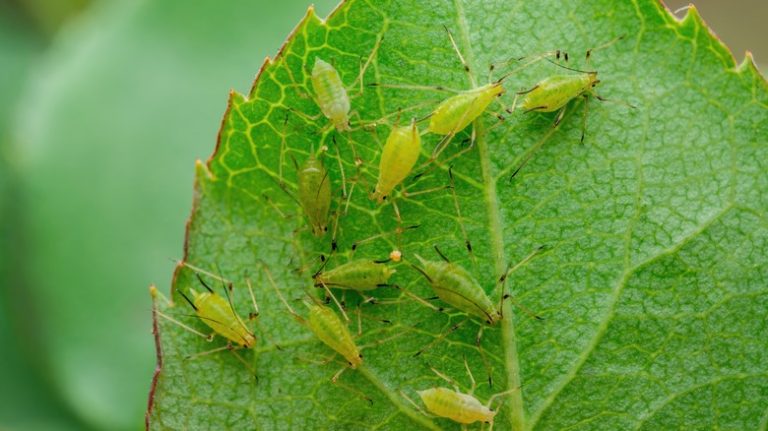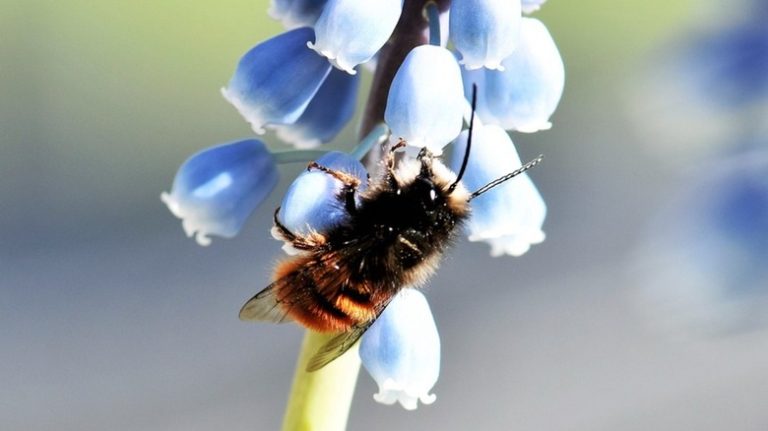We may receive a commission on purchases made from links.
Houseplants are therapeutic — they can reduce stress, improve air quality, and liven up your decor. However, as much as we love them, so do unwanted critters that munch on their leaves and nestle in their soil. Luckily, diatomaceous earth is a non-toxic pesticide that takes care of several common pests. The fine white powder is made out of fossils from microalgae organisms, and the granules have sharp edges that dig into the insects’ bodies. The powder soaks up the bugs’ oils and fats, drying and killing them. Food-grade versions of diatomaceous earth, which you can purchase on Amazon or at your local hardware store, are suitable as plant pesticides.
Diatomaceous earth is an excellent way to purge and repel creatures from your houseplants, especially when you have pets and children around or your plants are growing produce. It’s generally safe for use, but always wear gloves and a dust mask when applying. While it will work wonders on houseplants, it’s also an eco-friendly way to keep bugs out of your garden, but keep in mind that it can kill pollinators so it should be kept off blooms. However, while it is an effective pesticide, it doesn’t kill every intruder. It can eliminate critters with exoskeletons like cockroaches and spiders, but won’t kill thick-body insects like caterpillars and earthworms. Further, before applying, separate the affected houseplant from your other greenery to keep the pests from spreading.
Aphids (Aphidoidea)
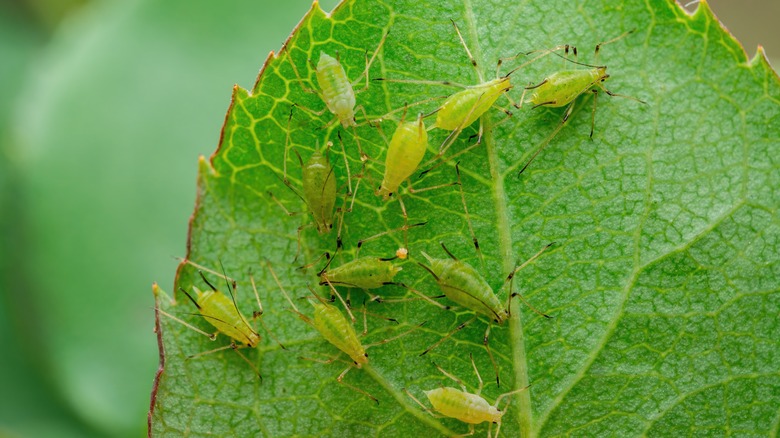
Aphids suck the moisture from your plant and transfer viruses. They reproduce quickly, so if there is one, there will soon be more. To get rid of aphids with diatomaceous earth, first spray your plant with water, ensuring that you also coat underneath the leaves where the pests could be hiding. While still wet, dust the powder onto the plant, covering the stem, leaves, and base. You can also apply the powder directly onto the aphids.
Fungus gnats (Culicidae)
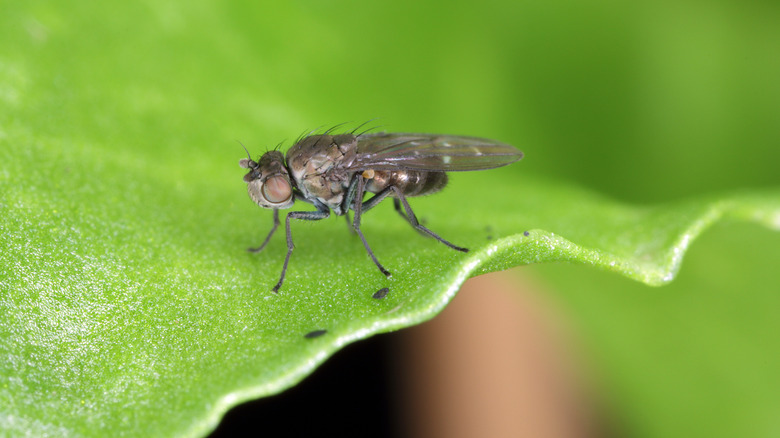
Fruit flies or fungus gnats love organic matter and damp places, making your houseplants a hotspot for their parties. While some studies, including a 2005 study published by HortScience, found that diatomaceous earth wasn’t effective against gnats, anecdotal evidence has been provided, such as from Diatomaceous Earth. Sprinkle this white powder on the topsoil of your plants to dry out the damp area that’s luring them in. It may kill the gnats and their larvae on contact. You can also mix it into the soil when repotting, and after each watering, reapply the pesticide.
Mealybugs (Pseudococcidae)
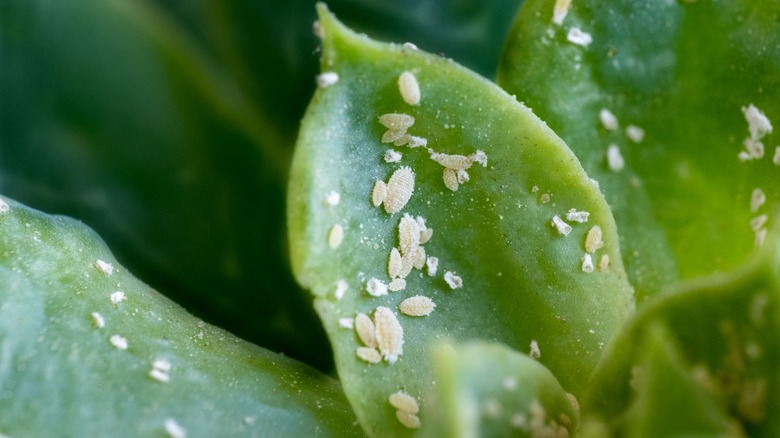
Wirestock/Getty Images
Mealybugs are fluffy white insects that suck the moisture from your plants. Diatomaceous earth gives them a taste of their own medicine, but you should only administer it when there are active mealybugs on your plants. First, mix the powder with water to create a paste. Next, apply the mixture to the plant and let it dry, leaving it on for up to two weeks. The white residue kills the bugs and can be rinsed off with water when the infestation dries up.
Scales (Coccoidea)
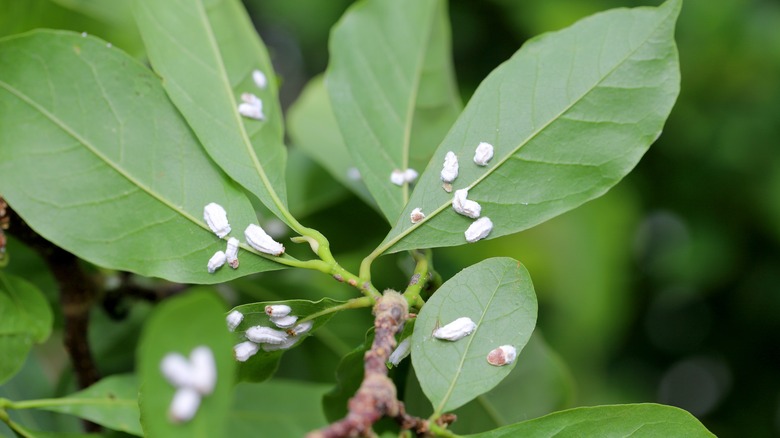
Tomasz Klejdysz/Shutterstock
Scales are another sap-sucking pest that infests houseplants. Diatomaceous earth is best applied as a mist to tackle scale. Thoroughly mix 1 tablespoon of the pesticide with 500 milliliters of water, then spray the foliage and the stem. Once it dries, the invading critters will feel the full effect. While diatomaceous earth may not work on scale eggs, you can respray the plant a week after the first application to eliminate any new hatchlings.
Spider mites (Tetranychidae)
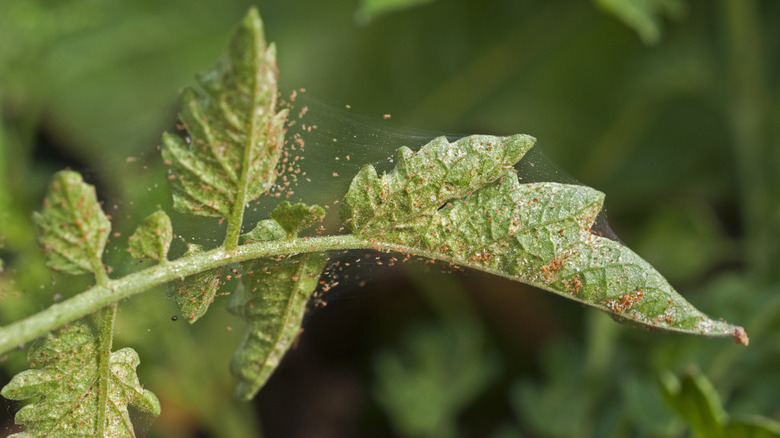
Jess311/Getty Images
Spider mites are tiny eight-legged creatures that build webs on your plants and damage the leaves’ cells. They like to hide under the leaves, making them difficult to get rid of. There are a few methods to apply diatomaceous earth to the underside of the foliage to get rid of spider mites. Mix it with water to create a thin paste and smear it in place or create a mist to spray the leaves. You can also sprinkle their webs directly with the powder too.
Springtails (Collembola)
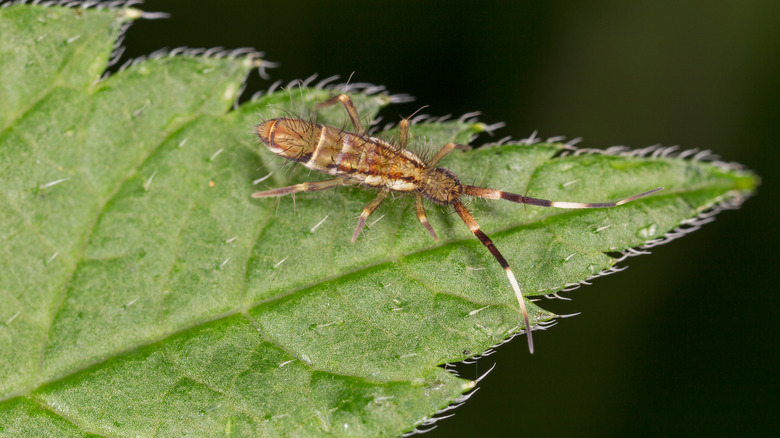
Ihor Hvozdetskyi/Shutterstock
Springtails are miniature pests that cause little damage but chew on roots, harming your plant. They like moisture and are often a sign of overwatering. Diatomaceous earth will dry out the insects and the soil, sending any survivors to look for a new home. First, let the soil air dry before covering the top layer in this eco-friendly pesticide. The application should easily take care of the springtails.
Thrips (Thysanoptera)
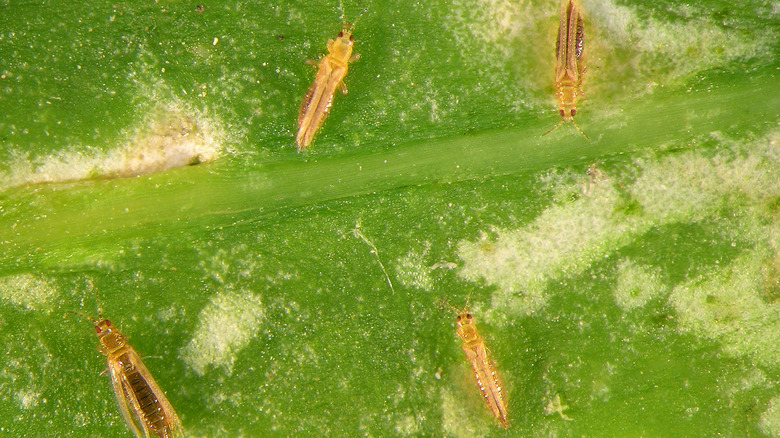
Protasov AN/Shutterstock
Thrips usually feast on plants. They suck the chlorophyll from the organism and leave the green leaves with white spots. To get rid of thrips, first cut away any dead leaves. Then, mist the plant with water and dust entirely with diatomaceous earth. Make sure to get underneath the leaves and the topsoil. Keep the powder on for up to two weeks and reapply after watering.
Whiteflies (Trialeurodes vaporariorum)
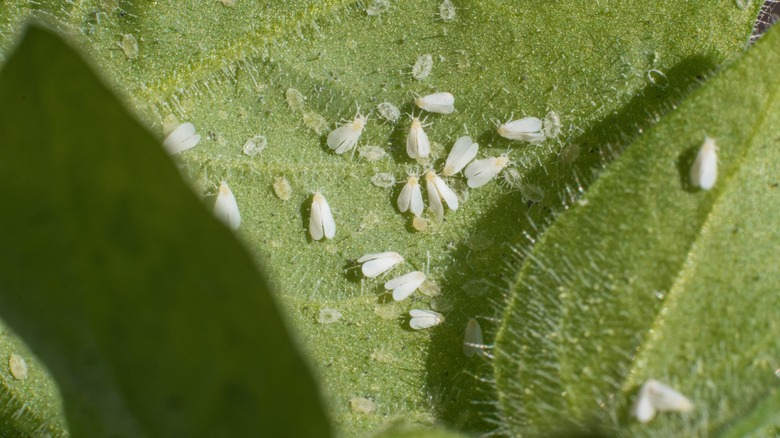
Tunatura/Shutterstock
Yellow and wilted leaves are a sign that whiteflies are taking over your houseplant. Fight back with diatomaceous earth. The formula of 1 tablespoon of the pesticide and 500 milliliters of water will work. Add it to a spray bottle and mist the entire plant. Again, it is best to reapply after a week to get any hatched flies that escaped the first coat. Then, your plant will be pest-free without any use of toxic chemicals. You may also want to add flowers that ward off insects to your houseplant collection, too.

